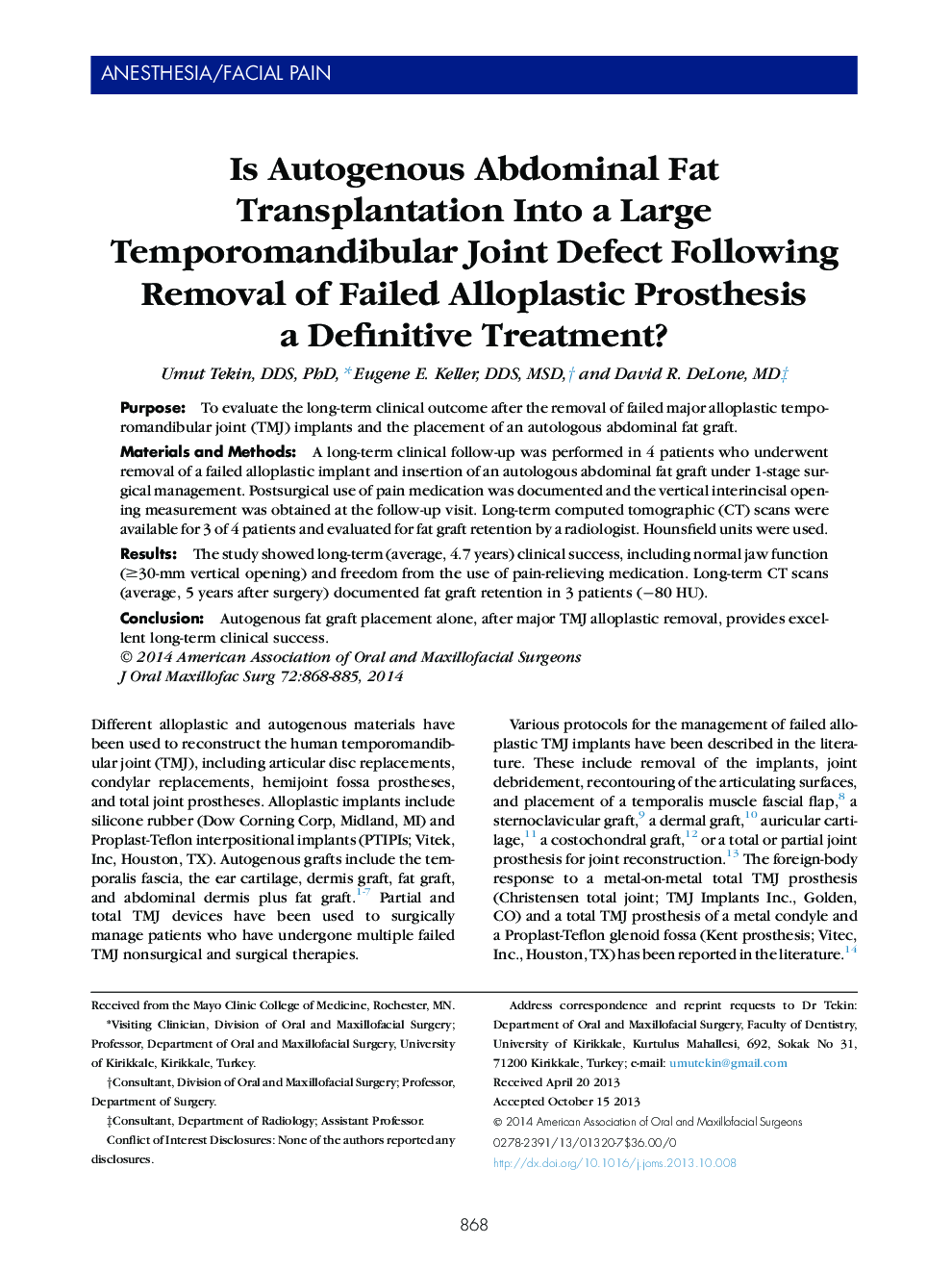| کد مقاله | کد نشریه | سال انتشار | مقاله انگلیسی | نسخه تمام متن |
|---|---|---|---|---|
| 3157873 | 1198201 | 2014 | 18 صفحه PDF | دانلود رایگان |

PurposeTo evaluate the long-term clinical outcome after the removal of failed major alloplastic temporomandibular joint (TMJ) implants and the placement of an autologous abdominal fat graft.Materials and MethodsA long-term clinical follow-up was performed in 4 patients who underwent removal of a failed alloplastic implant and insertion of an autologous abdominal fat graft under 1-stage surgical management. Postsurgical use of pain medication was documented and the vertical interincisal opening measurement was obtained at the follow-up visit. Long-term computed tomographic (CT) scans were available for 3 of 4 patients and evaluated for fat graft retention by a radiologist. Hounsfield units were used.ResultsThe study showed long-term (average, 4.7 years) clinical success, including normal jaw function (≥30-mm vertical opening) and freedom from the use of pain-relieving medication. Long-term CT scans (average, 5 years after surgery) documented fat graft retention in 3 patients (−80 HU).ConclusionAutogenous fat graft placement alone, after major TMJ alloplastic removal, provides excellent long-term clinical success.
Journal: Journal of Oral and Maxillofacial Surgery - Volume 72, Issue 5, May 2014, Pages 868–885